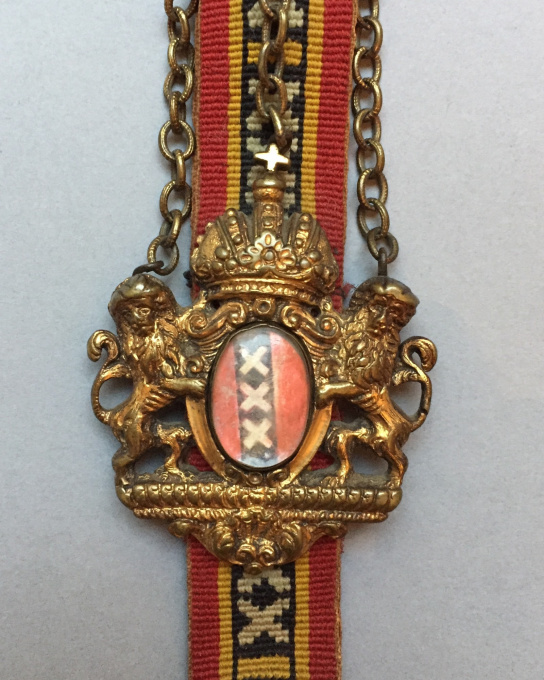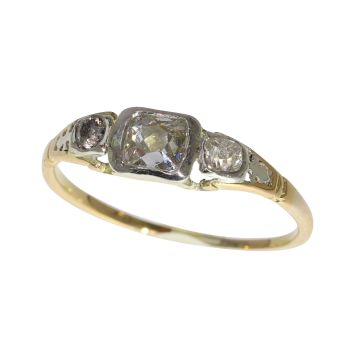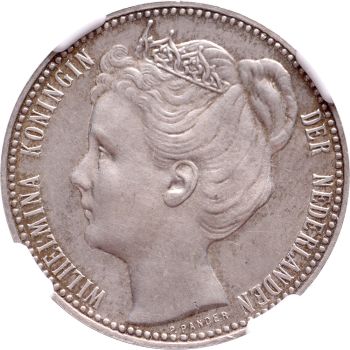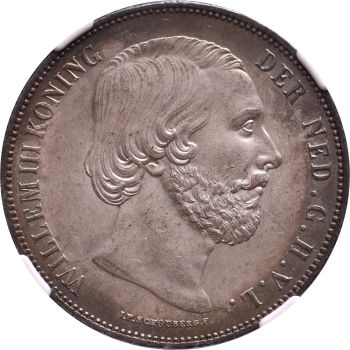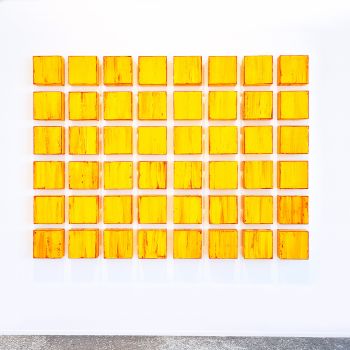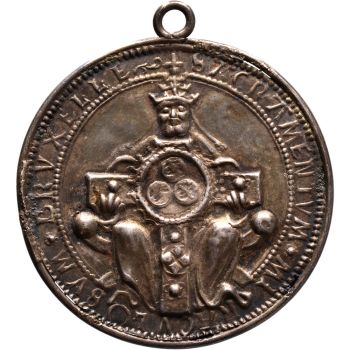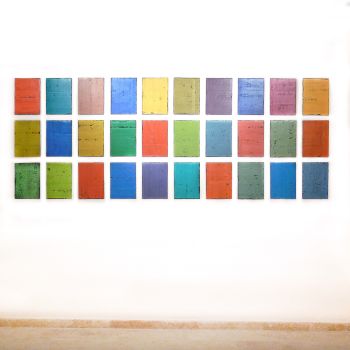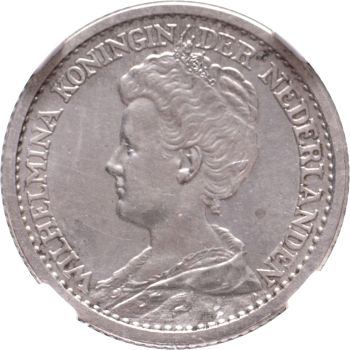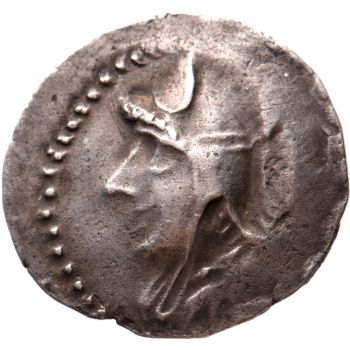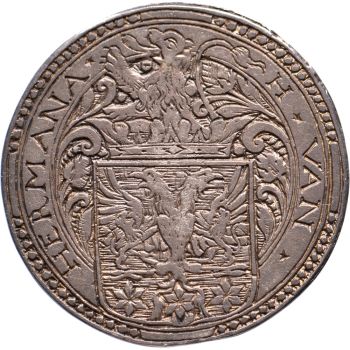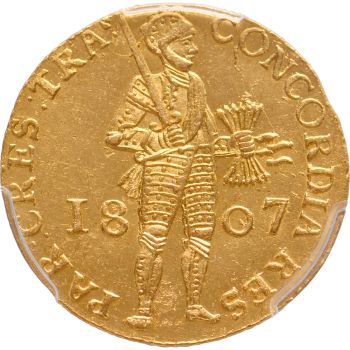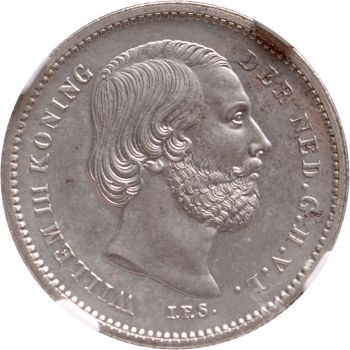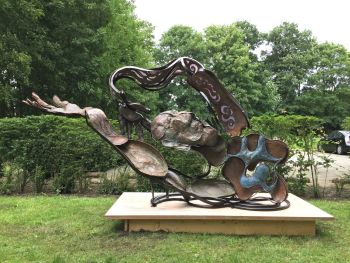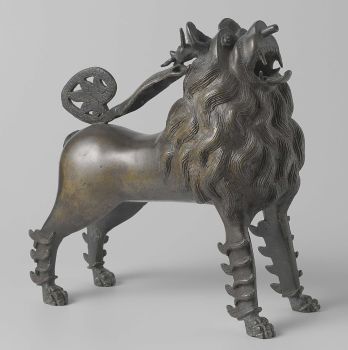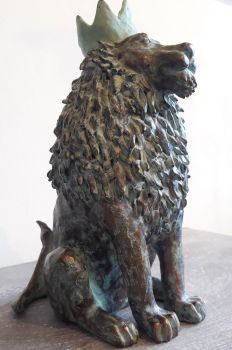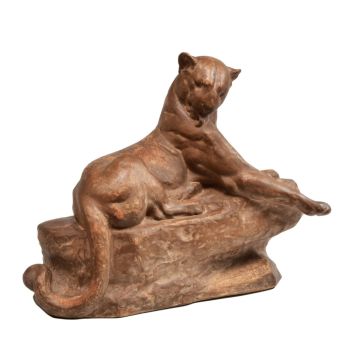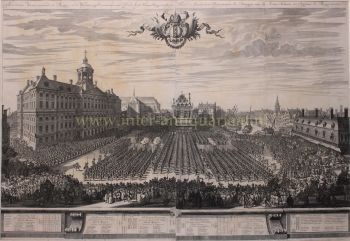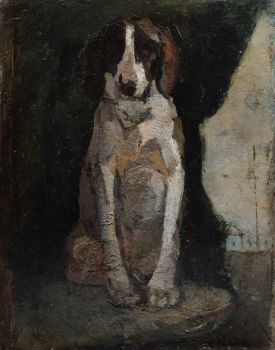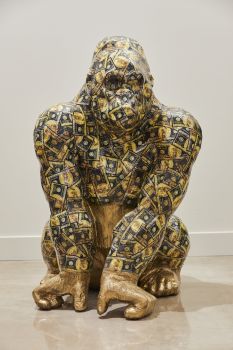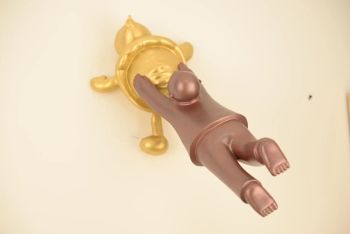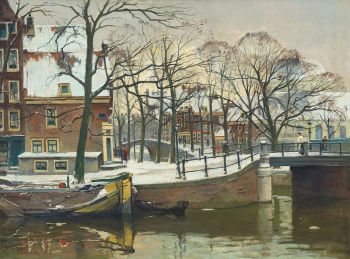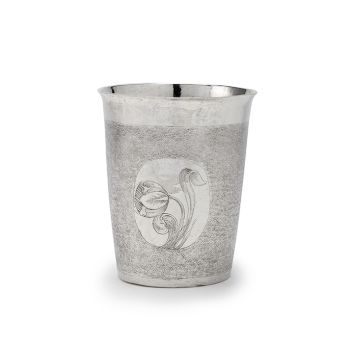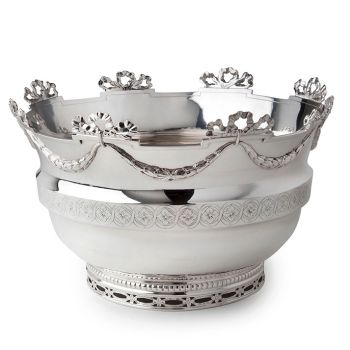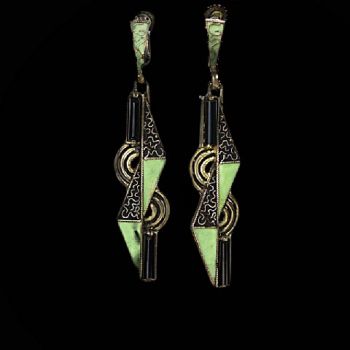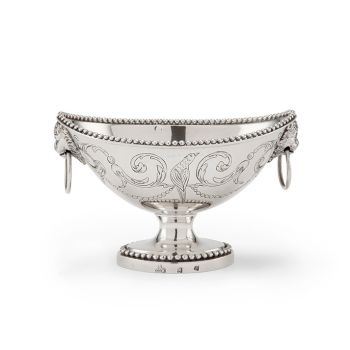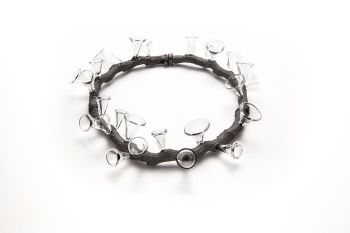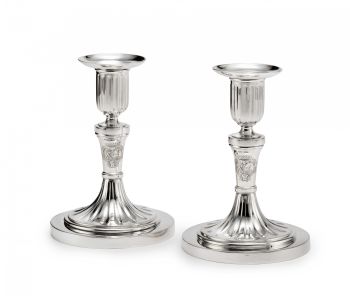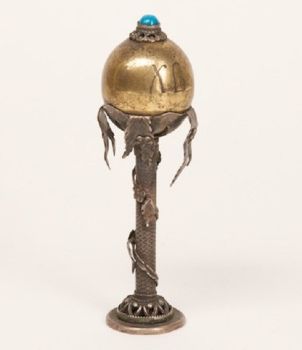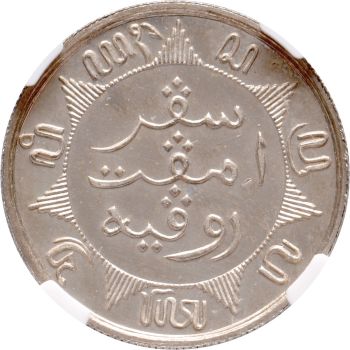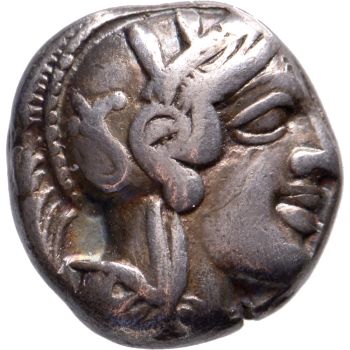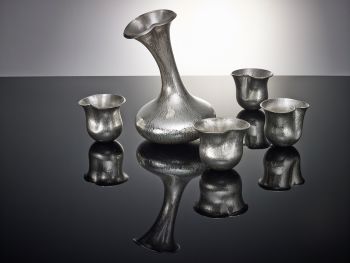Gilded copper Amsterdam ‘bodebus’. 1700 - 1750
Artista Desconocido
Plata
27 ⨯ 5.30 cm
ConditionGood
Actualmente no disponible a través de Gallerease
- Sobre la obra de arteGilded copper Amsterdam ‘bodebus’.
A bodebus was a distinctive sign carried by messengers who were employed by government bodies as provinces, municipalities and water boards (bodies charged with managing water barriers, waterways, water levels, water quality and sewage treatment in their respective regions).
This bodebus is connected with three chains to a small oval plaque on which a koggeschip (cargo ship) is depicted. The bus itself consists of two standing lions with an Imperial Crown: between the lions we find the Amsterdam coat of arms behind a round piece of glass: a red shield with a black belt with three white St Andrew's crosses. One of the two buckles carries the mark IHS.
In the standard work on the bodebus "de bodebus in de Lage Landen" by M. Achterberg (1980-1985 edition) only one identical bus can be found, without mentioning its present owner. Achterberg dates that bodebus as early 18th century. There is no further similar Amsterdam bodebus to be found in literature or museums.
The Rijksmuseum Amsterdam owns one bodebus; this one, however, dates from the 16th century and is in silver. The history of the bodebus goes back to the Middle Ages. A bode (messengers), who had to convey messages, kept his documents in a bus attached to his belt. Later, a shield to those bodebus was added with the arms of the body which they represented. The bodebus changed during time from a real bus to an (often richly decorated) insignia worn by the messenger on his coat. The bodebus gave the messenger several privileges such as free use of transportation (coach or ship) or stay in an inn. - Sobre el artista
Puede suceder que un artista o creador sea desconocido.
Algunas obras no deben determinarse por quién está hecho o por (un grupo de) artesanos. Algunos ejemplos son estatuas de la Antigüedad, muebles, espejos o firmas que no son claras o legibles, pero también algunas obras no están firmadas en absoluto.
También puedes encontrar la siguiente descripción:
•"Atribuido a …." En su opinión, probablemente una obra del artista, al menos en parte.
•“Estudio de….” o “Taller de” En su opinión, una obra ejecutada en el estudio o taller del artista, posiblemente bajo su supervisión
•“Círculo de…” En su opinión, una obra del período del artista que muestra su influencia, estrechamente asociado con el artista pero no necesariamente su alumno.
•"Estilo de …." o “Seguidor de…”. En su opinión, una obra ejecutada al estilo del artista pero no necesariamente por un alumno; puede ser contemporáneo o casi contemporáneo
•"Manera de …." En su opinión una obra al estilo del artista pero de fecha posterior
•"Después …." En su opinión, una copia (de cualquier fecha) de una obra del artista
•“Firmado…”, “Fechado…” o “Inscrito” En su opinión, la obra ha sido firmada/fechada/inscrita por el artista. La adición de un signo de interrogación indica un elemento de duda.
•“Con firma…”, “Con fecha…”, “Con inscripción…” o “Lleva firma/fecha/inscripción” en su opinión la firma/fecha/inscripción ha sido añadida por alguien que no es el artista
Related artworks
Artista Desconocido
Cáliz veneciano alado1624 - 1626
Precio a consultarPeter Korf de Gidts - Antiquairs
Artista Desconocido
UN PEQUEÑO NETSUKE DE MARFIL DE UN HOLANDÉS CON UN TAMBOR1750 - 1800
Precio a consultarZebregs & Röell - Fine Art - Antiques
1 - 4 / 12- 1 - 4 / 24
- 1 - 4 / 24
Artista Desconocido
Vaso de precipitados de plata holandés del siglo XVII1653 - 1677
Precio a consultarJacob J. Roosjen SRI
Frederik Rudolf Precht
Rebanada de pescado plateado holandés1756
Precio a consultarJacob J. Roosjen SRI
Jan Cornelis van Hemert
Canasta de dulces de plata holandesa1799
Precio a consultarJacob J. Roosjen SRI
Johannes Schiotling
Un par holandés de candelabros de plata1784
Precio a consultarJacob J. Roosjen SRI
Artista Desconocido
Huevo de Pascua de Presentación Ruso de Plata1880 - 1899
Precio a consultarH.W.C. Dullaert Art & Antiques Dealer
1 - 4 / 24

